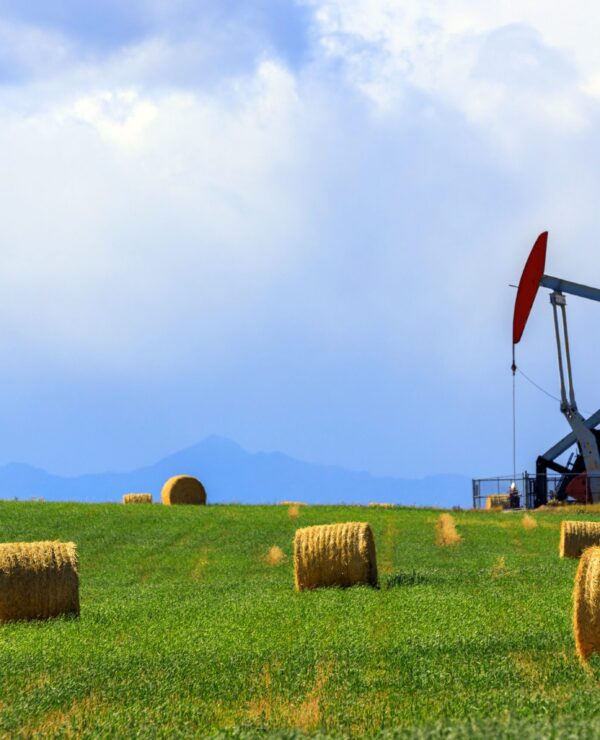Authors
National Co-Chair, Calgary
Calgary Managing Partner, Calgary
Partner, Regulatory, Indigenous and Environmental, Calgary
Partner, Disputes, Calgary
Associate, Regulatory, Indigenous, and Environmental, Calgary
The Government of Canada has announced draft regulations aimed at capping emissions of greenhouse gases (GHG) from the oil and gas sector. Utilizing a cap-and-trade system, the proposed Oil and Gas Sector Greenhouse Gas Emissions Cap Regulations would require the oil and gas sector to reduce emissions by 35% below 2019 emissions by 2030. The federal government has stated that the emissions cap will help decarbonize oil and gas production and increase efficiency, while supporting global supply to ensure the sector is on a path to net-zero by 2050.
The proposed regulations will reduce oil and gas production. The federal government has estimated minimal reduction from the projected growth, while provinces and industry have adamantly disagreed on the basis that the emissions cap effectively functions as a production cap. The Province of Alberta has responded [PDF] negatively to the proposed cap, referencing studies done by Deloitte and the Conference Board of Canada indicating significant impacts on oil and gas production, a significant reduction of Canada’s GDP, significantly reduced revenue for the provinces, job losses and decreased investment. Questions arise as to whether a proposed cap and associated regulations are within the constitutional competency of the federal government.
Cap-and-trade systems
The proposed cap utilizes a cap-and-trade system to incentivize reductions in GHG emissions. Under a cap-and-trade system, an emissions cap is set and facilities are allocated allowances which they can trade, sell or save. If needed, operators may acquire allocation by purchasing additional allowances from other facilities able to stay below their cap. Both small and large facilities are incentivized to reduce emissions in a cost-effective manner to take advantage of either selling additional allowances or reducing the additional allowances that need to be purchased. Cap-and-trade systems have been implemented in other jurisdictions, including briefly in Ontario (before being cancelled) and the European Union (which has had a system in place since 2005).
Scope of the proposed system
The proposed cap-and-trade system would set a limit on sector emissions, with a focus on sector emissions from upstream oil and gas activities, oil sands production and upgrading, natural gas production and processing and liquified natural gas production. While there is a requirement for all operators of these facilities to register and report emissions and production, large operators have remittance obligations and will be required to provide one eligible compliance unit for every tonne of GHG emitted. Emission allowances and some other types of compliance units can be bought and sold on an emissions trading market, prioritizing lower-cost abatement opportunities.
Reporting and remittance obligations will be defined for each facility as either a larger emitter or aggregated into deemed facilities to simplify administration. Facilities with more than 10,000 tonnes of CO2 emissions will be considered larger emitting facilities and operators with a total production of over 365,000 barrels of light oil equivalent per year would be considered large operators. The proposed regulations applies to operators of facilities in the upstream oil and gas sector, liquefied natural gas (LNG) production and offshore facilities. It is not expected to apply to refineries, pipelines or distribution.
The proposed cap and legal upper bound account for what the federal government expects are technically achievable emissions reductions and forecasted global oil and gas demand. Emissions from 2019 were approximately 171Mt; the proposed emissions cap, or allowance level, is likely to be between 106 and 112Mt, reflecting a 35% reduction from 2019 emissions. Initially, additional space for compliance flexibility of 25Mt will be created for a legal upper bound at 131–137Mt, allowing for additional allocation to be purchased reflecting only a 20% reduction from 2019 emissions. The final emissions cap and legal upper bound will be set in 2027 after 2026 emissions data is collected. The first compliance period will see allowances allocated free of charge on a pro rata basis equal to the emissions cap. Distribution of allowances will be based on a three-year rolling average of historical production and a regulation-specified distribution rate for a given product or activity.
Facility and operator compliance
The system would be phased in from 2026 to 2029. Once introduced, existing operators will have until January 1, 2026, to register under the regulations, with reporting obligations commencing in 2027 (for 2026 emissions) for large operators and 2029 (for 2028 emissions) for small operators. Reporting will be required annually by June 1 of each subsequent year. All covered facilities would be prohibited from releasing any GHGs resulting from a covered activity unless they have first registered to the system. Once registered, the regulations would prohibit releasing GHGs without remitting a sufficient number of compliance units for those GHG emissions.
To account for the significant time required to introduce decarbonization solutions within the sector, compliance flexibility will include offset credits and decarbonization units. In addition to emissions trading, multi-year compliance periods and credit banking for up to six years, operators may have the option to remit domestic offset credits or to make contributions to a decarbonization funding program to cover a limited portion of their GHG emissions. Despite this flexibility, a minimum of 80% of remittance obligations must be met with the allotted allowances.
Further industry consultation
The proposed regulations will be published in the Canada Gazette on November 9, 2024. A period for additional formal consultation is set to take place from that date until January 8, 2025. Feedback has been requested on the proposed regulations and the draft Quantification methods for the Oil and Gas Sector Greenhouse Gas Emissions Cap Regulations. The framework for the consultation has not yet been released. The projected publication of the final regulations is late fall 2025, coinciding with the latest date for the next federal election.
Constitutional question mark
The proposed cap and regulations have the potential to significantly impact Canada’s oil and gas sector, including the potential for reduced investment and production. Regulation of GHG emissions from the oil and gas sector in this manner is a step out by federal government that may be a step too far. There is a clear constitutional question mark as to whether Parliament has jurisdiction to regulate GHGs in this manner. The Government of Alberta has stated [PDF] that the proposed cap would violate section 92A of the Constitution and result in oil and gas production cuts and shut-ins. Provinces have broad and exclusive jurisdiction under the Constitution Act to regulate matters related to the exploration and development of oil and gas resources. The jurisdiction of Parliament to regulate these activities is much narrower and must be firmly grounded in powers granted to it under the Constitution Act.
It will be important for those in the oil and gas sector to review and follow the development of the proposed regulations carefully and to consider participating in the proposed consultation process discussed above.


